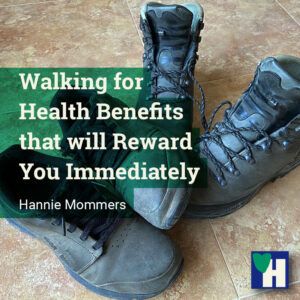
I have never been the sportive type. My husband Tom and I did an occasional walk during the week and for me, that was enough. Until I sprained my ankle. The physiotherapist hammered into me that walking for health reasons is not a luxury, but a necessity. I really should take it more seriously.
He was right of course. There are so many benefits from something as simple as walking that I considered myself not too smart postponing it for such a long time. Nowadays I am addicted. 🙂
The benefits listed here are not only achieved through walking but through any kind of exercise.
The main advantages of walking are that it is easy to do, cheap, as you don’t need an expensive gym subscription, and that it has a relatively low impact on the joints of our body.
Some of the links are affiliate links. As an affiliate associate, we earn a commission when you purchase any of the products offered through the shared links at no extra cost for you. This helps us maintain this website.
Table of contents
Why walking for health benefits pays off
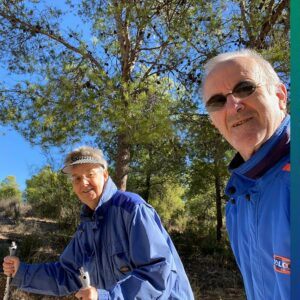
First of all a disclaimer: despite the benefits of easy to do and low impact on your body, if you have any medical condition or haven’t been active for quite some time, do see a specialist. This can either be the GP, a personal trainer or a physiotherapist.
Later in this article I describe a proven strategy of a regime to follow after an injury (link). It’s a good idea to follow that strategy as well when you are a beginner.
Physical benefits
- Improves balance. A perfect practice for fall prevention;
- Stronger bones;
- Prevents or improves arthritis;
- Claims to suppress or delay cancer;
- Prevents cardiovascular disease. Makes the heart stronger because the blood is pumped through the body more strongly;
- Enhances blood flow and lowers blood sugar;
- Builds muscle strength. As a result the legs get toned;
- Facilitates weight loss. Exercise burns calories;
- Develops endurance and energy;
- Improves sleep;
- Longevity;
- Boosts immune system.
Related: What Certainly Not to Do when You Want to Lose Weight

Mental benefits
- Enhances mental health conditions;
- Boosts creativity;
- Claims to postpone mental disease, like Alzheimer’s;
- Relaxation;
- Socializing if you walk with others.
Related: Age-related health conditions that may be prevented with exercise
Postpone disease
I’ll be forever confused why every government put all its COVID-eggs on a vaccine and never said anything about lifestyle. Although I can come up with at least two reasons: prevention is not sexy and it brings in less money.
With prevention, you never know whether it really helped. Prescribing medicines gives a visible result. Even if the result is bad.
When my father was diagnosed with Alzheimer’s, I had already read a tremendous amount of information. My mother denied his illness for a long time and dragged him everywhere. They walked 2 to 3 hours a day.
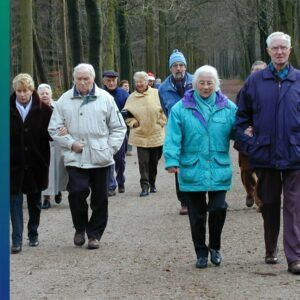
I knew from the literature that exercise is beneficial for patients with Alzheimer’s. So when caring for my father became too difficult for my mother, I went for a weekly walk with him at a special association.
It is still argued that there is not enough scientific research to support that exercise is good for mental illness. But I am very sure that my mother’s drive to walk so much every day has been my father’s preservation for a long time.
As I suspect in retrospect that those subsequent weekly walks I did with my father were not sufficient enough.
Related: The books of Raynor Winn about her husband’s illness
Several ways of walking
If you have ever spent an afternoon shopping, you know that sauntering around is more tiring than plain walking. To reap the benefits of walking, putting in some effort is recommended.

Start at a normal speed, for most people my age that will be 4 to 5 km/hr. Set a goal of walking for half an hour daily. Can’t you do that? From my own experience, I promise you will get to that by following a plan. Start with what you can achieve, even if it is just one minute, and add a little bit of time each day.
Walk at a pace where you can still talk but not sing. A little more than your normal pace is enough. So that you feel that you make an effort without panting.
Tom’s average speed is higher than mine. To compensate and so that we both work out enough, I walk with Nordic poles and Tom without. Aside from the silly comments from fellow hikers (hey, you forgot your poles), it works perfectly for us.
Improve yourself
A favourite saying is “Use it or lose it”. Hence, it is necessary to practice. Another statement is “Stagnation means decline”. In other words, if you always do the same thing, you will not improve.
You can make walking more strenuous by:

- Walking further;
- Faster;
- Heavier, by holding weights in your hands;
- More strenuous, by walking up a slope;
- Alternating, in a pyramid training or interval training.
In the Netherlands, we know the International Four Days Marches of Nijmegen. People sign up to walk 30, 40 or 50 kilometres a day and there are always those who have never walked that much but start training a few months in advance.
The worst thing they can do is walk their desired distance as often as possible. As a result, they are already injured before the march or have to stop during those days. Building strength and stamina sensibly mean alternating quiet days with strenuous days.
Influence of nature on the human body
Research is increasingly showing that our contact with nature is important for our well-being. We spend too much time between concrete buildings or packed in metal driving boxes.
Try to walk in a natural environment as much as possible. Not everyone lives on the outskirts of a small town like us, but most cities have parks. And if a park is too far away, a tree-lined street will do as well.
A friend of mine is lucky enough to live close to the sea and a lovely sandy beach. Read about her results here.
Recommended to do
- Invest in good shoes;
- Warm up by starting slowly and cool down by ending slowly;
- Stretch your muscles;
- Wear clothes with reflective stripes, particularly if you walk in the dark;
- Journal about your walks so you can experience your progress in time;
- Take care of variation in order not to get bored;
- Join a group or walk with a friend.
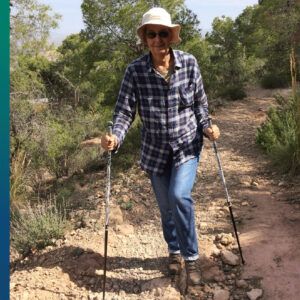
About 4 years ago a friend was raving about walking 10.000 steps a day and inspired me to do the same. After 2 months of faithfully walking 10.000 steps every day, my shin started to hurt. Not right away, but after about ⅔ of my walk. And instead of lowering my goal I kept on going, following my upbringing of being a fierce person.
My physiotherapist scolded me for my shoes, they were completely wrong. Especially if you walk a lot, it is necessary to have shoes that support your feet well and correct them where necessary.
My feet were measured at a specialized sports shoe store and my walking was watched on a video. The owners of the business were athletes as well as physiotherapists, so they were able to give the perfect advice for my shoes.
Related: How Many Calories Burned Walking 10,000 Steps (& Why I Think it’s BAD)
Traps to avoid
- Don’t think too lightly about a check up at the doctor’s;
- Plan your goals with care in order not to overdo it;
- Avoid blisters;
- Take precautions against insects and for the different types of weather, like sun hats or rain clothes;
- Drink enough water, either before or after your walk, or during if you walk far;
- Be careful of traffic.
Graded activity after being injured
Years ago when I was walking with my mom and paying more attention to her than to myself, I stepped on a loose tile with a hidden hole and twisted my ankle.
I thought it would pass and waited 2 weeks before going to the physiotherapist. Of course he sputtered at me (again!), because now I had also put the wrong pressure on the knee of my other leg.
He gave me a schedule, which I sometimes reuse. My ankle and knee will remain my weak spots, I’m afraid. By starting over with this graded activity schedule after an injury, recovery will be faster and better.
Basic training for one week
This schedule can be used for any sport, not just walking. It could be hiking, biking, nordic walking, swimming, anything you can do either at an easy pace or very intense. You need a stopwatch, which most smartphones have, I guess.
Do your exercise for as long as you can practice it pain-free. Clock the time and make a note on a piece of paper (or download the pdf – no login required).
Building your strength in the next five weeks
When you have practised for 7 days, calculate the average of them (x). Put 80% of that average time (y) on the paper at the start of the second week.
At the end of the next 5 weeks, you put (z). Z is 2,5 times Y. Every crossing of the line YZ indicates the time you have to practice on that day. The intention is to slowly build up your strength.
Don’t do more than the indicated time. And whenever it gets painful, stop, go back to the basic training to collect new data of pain-free exercising and start over.
If you’re doing well after the 5 weeks you can either extend the line or you can try how much further you can go without pain and see if you are satisfied with that level of exercise.
The timing depends on your possibility
It doesn’t matter whether the 5 and 10 on the example are minutes or seconds. Or whether it’s not 5 and 10, but 15 and 30. It’s important to exercise and to do that the right way. Better to walk really, really slowly without hobbling, than overdoing it and growing another injury because you compensate your movements in the wrong way.
Related: How to Lose Weight without Hunger in a Practical Way
Measuring and motivating yourself
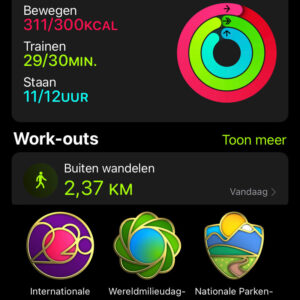
I have mentioned journaling, to measure your progress, and looking for walking buddies, to motivate yourself. There are many smartphone apps that measure your performance and support your motivation. I have an iPhone, so I don’t know anything about the Android apps, but I am sure they will be similar. For instance:
- Step counter or pedometer;
- Heart rate monitor;
- Condition app.
Many apps motivate you with the help of ‘gamification’. They give assignments and offer you a medal as a reward. Tom thinks that is nonsense, but I love it. I get motivated by it.
Related: What is Digital Health and what Good is it to Us?
Walking for health benefits
Walking is an important exercise for promoting your health. Research shows that some diseases can be prevented or delayed. It’s a great way to relax or socialize with friends. Walking has many advantages and just a few disadvantages.
Do you often walk? Tell me in the comment box below.

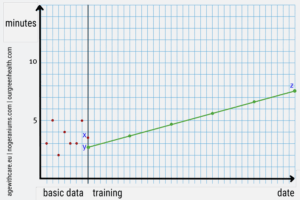
Hey Hannie,
This is a great post, I have shared it with my parents because they could do with doing a lot more walking. So do I actually, I need to get our more and go for walks. Not just for the physical benefits, but also for the mental benefits. Where I live, there are many beautiful parks where I can go for a walk and I just know that it will make me feel great.
So, I am going to start doing more walks in the parks I discussed and I will let you know how they go.
Thank you for sharing such an inspirational article, and keep up the amazing work.
All the best,
Tom
Thank you, Tom, it is always great to know our articles are inspiring and are being shared. 🙂 That’s what we do it for.
Often our advice is aimed at aging people but also applicable to younger ones like you. When I had a staff back in the Netherlands I forced them and myself to go outside for 15 minutes after lunch. One of us would stay in the office as a telephone guard in a roulation system and the other 3 would go to the forest nearby to walk under the trees.
Back then my reason was ‘to be outside’ but in hindside also the walking was good for our afternoons. We were all graphic designers and had to be at our creative peak most of the time. These short walks added to that.
As an additional advantage we got to know each other as colleagues. The talking subjects would vary of course. Sometimes about work, sometimes about personal problems or about a funny incident. I have fond memories of these relaxing moments.
After reading your article I have changed my opinion. Walking is really powerful!!! Thanks for sharing. I was really surprised by how many benefits there are. There are quite a few walking techniques, that’s brilliant. Never thought of walking with weights. I am not sure what is meant by pyramid training though. I think the most important is consistency and also motivation to put shoes on and walk 🙂
Walking for health benefits is indeed powerful. You’re right OlaBee, consistency and motivation are the drive for taking care of our health. The beauty of that is, that once we have put in the effort of being consistent it’s ingrained as a habit and becoming a necessity to feel good, which adds to the motivation.
A pyramid training is an interval training in which the intervals first get longer and halfway turn around to getting shorter and shorter. So my 15 minute pyramid walk looks like this:
warming up 3min – fast walking or jogging 15sec – normal walking 30s – faster 30s – normal 45s – faster 45s – normal 1m – faster 1m – normal 1m – faster 1m – normal 45s – faster 45s – normal 30s – faster 30s – normal 15s – faster 15s – cooling down 3m.
I made several schedules in my trainings app for 10m, 15m, 20m and 30m. They all have the same pattern of adding or subtracting 15s.
Let me know if you have more questions about it. 🙂
Hi Hannie,
When I was a child, my mother always took me for walks in the afternoons. We would walk for an hour or so. She still does it, and it is probably one of the reasons why she is in excellent shape (she also eats very little meat and drinks no milk).
I like to walk when I can and I used to take my dogs for long walks over a year ago, but I have had an inflammated knee for a year and only now did it get better (yes, I went to the doctor last year 😉 , not this year) The irony is that now that my knee is finally better I got an hematoma in my back due to something someone did to my back …
So now I still can’t do everything I would like to do, and so my walks are limited to my property. I often take breaks between my online classes and my work on my websites and I take one or two walks around my property. Although the walks are shorter, at least I’m still walking and getting fresh air. As soon as my back has healed, I plan to go for longer walks again. I agree, they are so good for you! It is good exercise.
You have a smart mother, Christine! Very well, how children’s habits affect our habits later in life, isn’t it? Such a shame that an injury can throw a spanner in the works. It is always difficult to get back into the rhythm afterwards.
I can really recommend the schedule from my own experience. Even if you can walk pain-free for only 10 seconds, that is a good starting point for progressing. It will prevent later injuries.
I do hope your injury will get better soon! Take care.
Hi Hannie!
Thanks for another great article – as always interesting to read!
I like walking a lot and try to use my car only if I don’t have enough time, or a distance is too far away. I have an app on my Android, which counts my steps, and before I thought that everyone needs to have 10.000 steps daily. I was trying to adhere that goal, but then I always felt very tired. Now I stopped following this rule, and just walking for my enjoyment, but feel addicted to it too.
I agree that all governments are talking about vaccine and not about the lifestyle to prevent diseases unfortunately. Because it brings huge money to pharmaceutical companies.
Hopefully we can all stay healthy by taking care about ourselves!
Alex
Hi Alex. Yes, in a way it is/was a hoax, this 10.000 steps rule. For me it didn’t work out well either, so nowadays my goal is 5.000 steps, although I often walk more. It’s just not one size fits all – as with everything in life. 🙂
Apart from the governments that should focus more on lifestyle habits, we have a responsibility ourselves too. It’s great that you too try to walk as much as you can instead of taking the car. In the end we are the ones that take the decisions to do one way or another. That’s the aim of Tom and me with this website: to inspire people to act wisely. 🙂
You take care too!
Hi Hannie,
Fantastic!
I guess you already know my views on walking, but I’ll share with you anyway.
I would say even with all the different forms of exercise I have done over the years, and even with the amount of exercise I still do to this day, I would still class walking as the best exercise ever.
Whether I’m lifting weights in the gym, doing sprints on the track, or completing advanced bodyweight circuits, I start every single morning (without fail) with a walk.
Admittedly, this isn’t merely walking for health benefits of the physical nature you understand, but as you’ve touched on above, I find it to be a fantastic way to clear my mind, and set me up for the day.
I’ll generally walk for 45-60 minutes, perhaps reciting some affirmations, or planning out the day ahead, or simply trying to clear my mind of negativity.
By the time I get home, I’ve managed to get in a good 3-4 miles.
I honestly believe irrespective of anyone’s physical or mental goals, we should all be walking on a regular basis.
I actually love the advice you have given here too.
When it comes to exercise, even something as simple as walking, people typically set themselves lofty goals.
When they’re unable to achieve these, this is generally when they give up on exercise.
So, you’re perfectly correct, start small and work your way up, even if you only start with one minute’s walking, that’s one minute’s more exercise than you did yesterday.
Well done Hannie.
Partha
Thanks so much, Partha. And yes, since I do know how you think about walking and exercising in general, this means a lot to me, coming from you. 🙂
A favorite expression of me is “the past does not equal the future”. Something everybody who has set goals in the past and failed, can pull themselves up on. So if we have made our goal too ambitious , don’t give up, just start again.
Tom and I were at the beach this morning, walking on the boulevard. A man who was probably older than us – even though I find that difficult to estimate here in Spain – had a lot of difficulties walking. But he walked anyway. Very slowly, yet very precise. I thought it was wonderful!
Hi Hannie,
I appreciate your important information.
Walking is indeed a great way to improve health and get numerous benefits like increase cardiovascular fitness, strengthen bones, reduce body fat, boost muscle power, and endurance. And moreover, it has both mental and physical benefits which improve sleep, longevity, and strengthens the immune system.
Walking is an enjoyable and social part of our lifestyle, It improves us as an individual and our overall functioning of the body. It helps us connect to nature and refresh our minds and soul. It is a pleasurable form of physical activity we can vary it by walking with the pets, friends, or joining a walking club all these motivate you to walk regularly.
Mornings are the best time to walk because of less pollution, which allows us to get an adequate amount of oxygen and fresh air. Walking is best to feel the active, energized, and amazing beginning of the day.
More interesting and understandable content. Thanks
“I’ll be forever confused why every government put all its COVID-eggs on a vaccine and never said anything about lifestyle. Although I can come up with at least two reasons: prevention is not sexy and it brings in less money.”
Spot on! I said this to anyone who would listen from the start of this pandemic. Almost no one was talking about how we can strengthen our immune system and use this “opportunity” that COVID created to improve our lifestyle. If this was all we would get out of this, oh how the world would change for the better! Unfortunately not many people have understood they need to make changes to their lifestyle and more importantly, why they need to do this. Pandemics will come and go and this may happen more often in the future. It’s important that we all understand that our health should be the first on the list and we should act accordingly.
My idea as well, Brenda. I like the thought of taking the responsibility for our immune system into our own hands is an inkspot that slowly covers the world. More and more people will come to the conclusion we can’t continue like this and will take better care of themselves and of the earth.
Although to be honest, I would loose my usual optimism if I didn’t think this way. 🙂